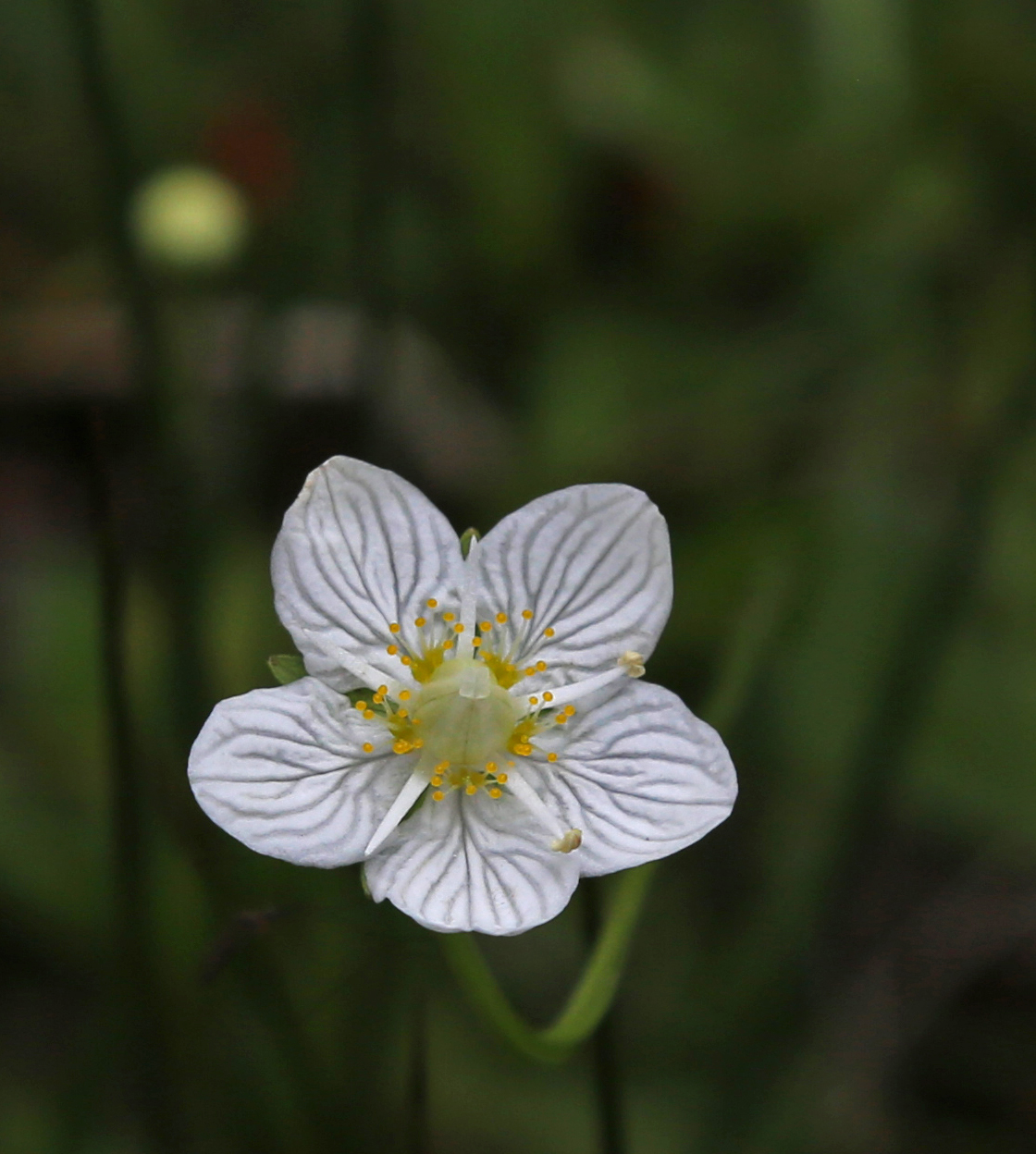Parnassia palustris parviflora
(Parnassia palustris parviflora)

Description
The genus Parnassia, also known as Grass of Parnassus or bog-stars, are plants in the family Celastraceae. The plants occur in arctic and alpine habitats, as well as in dune systems and fens, swamps, wet meadows, open seepage areas, moist woods, and across the Northern Hemisphere. It is actually not a grass, but an herbaceous dicot. The stalk of the plant can reach up to 8 inches (200 mm), the leaves up to 4 inches (100 mm) and the petals can be up to 1.4 inches (36 mm) wide. The flower has five white petals with light green venation. There are five three-pronged sterile stamens, each tipped with drop-like, false nectaries, which (along with the visual cue of veins) attract pollinating flies and bees. Some species are often found in wet calcareous habitats with low fertility, low canopy cover, and high plant diversity. Parnassia glauca is considered to be an indicator species of fens in New York State. Such habitats are often becoming rare, and so species of Parnassia may have high conservation value. For example, Parnassia palustris is threatened and legally protected in Michigan while Parnassia caroliniana is considered imperiled in North Carolina. Parnassus flowers are the symbol of the Clan MacLea, also known as the highland Livingstone clan, which is said to be the favorite flower of St. Moluag, the Irish missionary whose staff the clan chiefs hold. Three Grass of Parnassus flowers appear on the Flag of Cumberland, a British county, as that flower grows on Cumberland's lofty fells.
Taxonomic tree:







